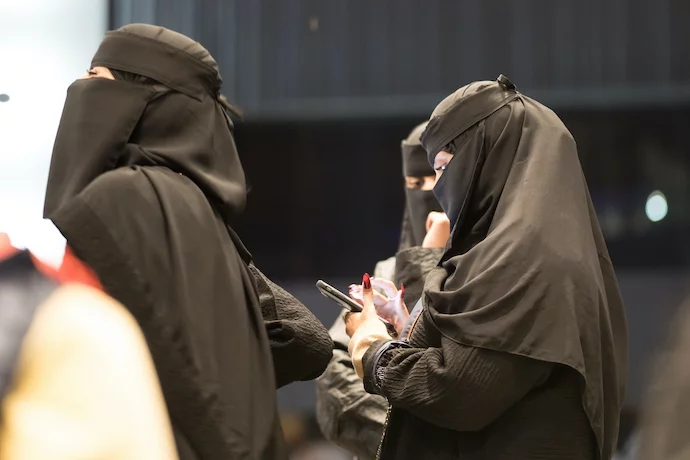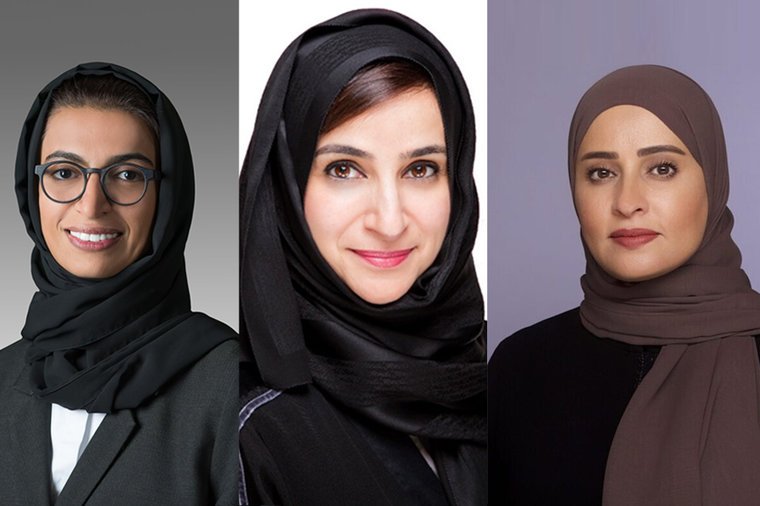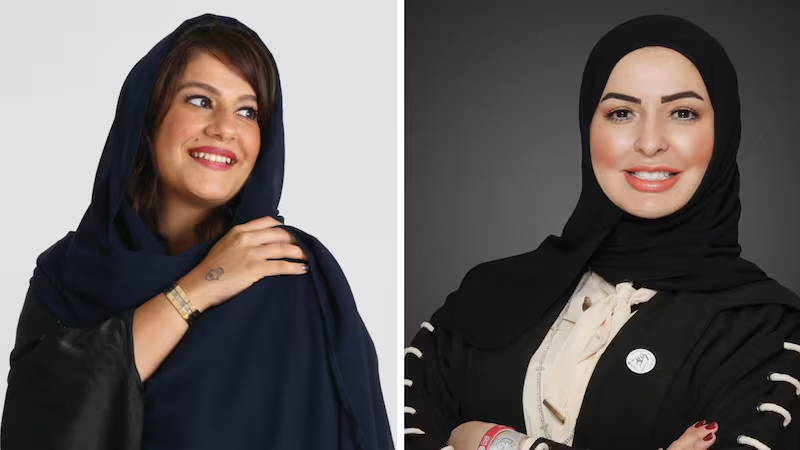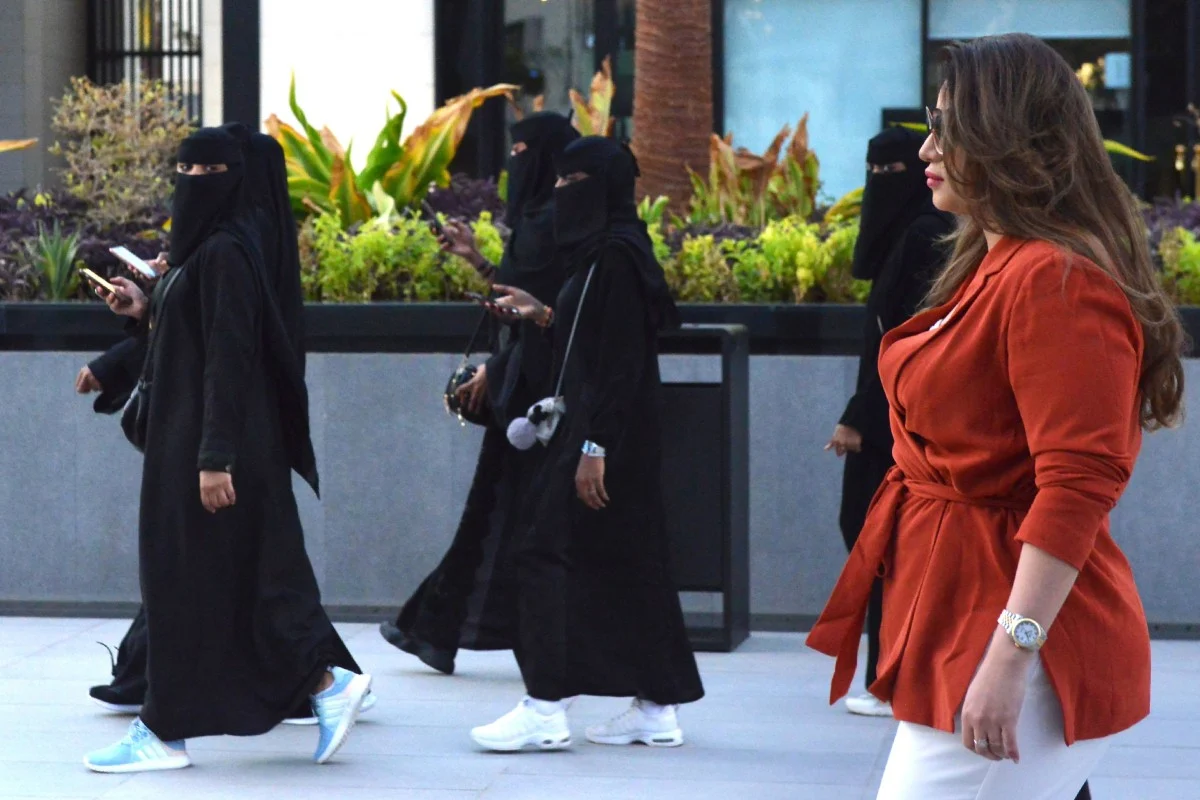The Middle East has entered a new era where women are at the forefront of social and economic transformation. Among the most fascinating comparisons lies between Emirati vs Saudi women — two groups united by religion and culture but shaped by different national visions.
Both nations share Islamic values and tribal heritage, yet their women’s lifestyles, freedoms, and societal roles differ significantly. The UAE’s early modernization encouraged female empowerment from the 1970s, while Saudi Arabia’s recent reforms under Vision 2030 are rapidly redefining women’s status in society.
Historical Evolution of Women’s Roles

Emirati Women’s Journey
The UAE’s founding father, Sheikh Zayed bin Sultan Al Nahyan, championed women’s education and rights from the country’s birth in 1971. His belief that “a nation without educated women is a nation without a future” inspired policies promoting equal opportunity.
Today, women occupy leadership roles across government, diplomacy, and technology. The UAE ranks among the top countries globally for gender equality in the Arab world.
Saudi Women’s Transformation
For decades, Saudi Arabia maintained conservative interpretations of Islamic law that limited women’s visibility in public life. However, since 2016, Vision 2030 has redefined the Kingdom’s social structure.
Reforms have allowed women to drive, travel independently, and join various professions. According to the Saudi Ministry of Human Resources, female participation in the labor force rose from 17% in 2016 to 36% in 2023 — a dramatic leap in under a decade.
Education and Literacy
Education is a shared foundation for empowerment in both nations.
- UAE: Female literacy exceeds 95%, and women represent over 70% of university graduates.
- Saudi Arabia: Literacy among women stands at 92%, and women now make up 60% of university students.
Emirati women often pursue advanced degrees abroad with government scholarships. Saudi women, encouraged by new policies, are increasingly joining international exchange programs and STEM fields — once considered off-limits.
Employment and Economic Empowerment
Emirati Women in the Workforce
The UAE encourages women’s participation across sectors. Women make up 66% of public sector employees, with 30% in leadership positions. The country has several women-only business networks, like the Abu Dhabi Businesswomen Council, supporting female entrepreneurs.
Saudi Women in the Workforce
Saudi Arabia’s job market is transforming quickly. According to Saudi Vision 2030 Reports, women’s employment in private businesses increased by 30% between 2019 and 2024. Women now work as pilots, lawyers, engineers, and sports commentators — roles unimaginable a decade ago.
Legal Rights and Guardianship
In the UAE
Emirati women enjoy legal independence. They can sign contracts, own businesses, travel, and apply for passports without male permission. Domestic violence laws protect women’s rights, and the government regularly updates family laws to promote equality.
In Saudi Arabia
Until 2018, male guardianship laws limited women’s independence. But today, the scenario has changed:
- Women can obtain passports and travel without guardian consent.
- They can register births and marriages.
- They can serve in the military and the police.
Still, some cultural conservatism remains, particularly in rural regions.
Fashion and Cultural Identity
Fashion reveals how Emirati and Saudi women balance tradition and modernity.
- Emirati women prefer elegant, tailored abayas with intricate embroidery or designer touches. Fashion weeks in Dubai highlight luxury modest wear, making the UAE a hub of Islamic fashion.
- Saudi women traditionally wore plain black abayas, but the trend is changing. Riyadh and Jeddah fashion events now showcase bold colors, contemporary cuts, and global influences.
Both nations maintain modesty as a cultural value but celebrate fashion as a form of empowerment and expression.
Political and Governmental Participation

Emirati Women
The UAE government has set a 50% representation goal for women in the Federal National Council. Women hold significant offices such as:
- Minister of Community Development
- Minister of Climate Change and Environment
- President of the Federal National Council (Amal Al Qubaisi)
Saudi Women
Saudi Arabia is steadily increasing women’s representation. Today, 30 women serve on the Shura Council, and several are ambassadors and deputy ministers. Princess Reema bint Bandar’s appointment as ambassador to the U.S. was a landmark moment in Saudi diplomacy.
Media, Arts, and Representation
Emirati and Saudi women are making waves in creative industries.
- Emirati film directors like Nayla Al Khaja have gained international recognition.
- Saudi filmmakers, including Haifaa Al-Mansour (Wadjda), have broken cultural barriers and introduced women’s stories to the global stage.
Social media influencers in both countries now use platforms to challenge stereotypes and promote business ventures. Saudi and Emirati women dominate regional digital marketing and brand collaboration spaces.
Marriage, Family, and Social Expectations
Family is central in both cultures, but societal expectations are evolving.
- In the UAE, women balance modern careers with traditional family roles. Increasingly, they marry later to focus on education and professional growth.
- In Saudi Arabia, the traditional family structure remains strong, but mindsets are shifting. According to Arab News (2023), 40% of Saudi women now consider career development a higher priority before marriage.
Religion and Modern Interpretation
Islam remains the guiding principle for both nations, but its expression differs.
- UAE: Promotes tolerance through initiatives like the Ministry of Tolerance, fostering coexistence among diverse communities.
- Saudi Arabia: As the cradle of Islam, it upholds deep-rooted traditions, yet the Vision 2030 social reforms are aligning Islamic values with modern aspirations.
Both models show how religion and modernization can coexist without contradiction.
Role in Technology and Innovation
Technology is reshaping gender roles in the Gulf.
- UAE: Women account for 35% of STEM graduates and lead projects in artificial intelligence and renewable energy.
- Saudi Arabia: Women are driving innovation in fintech, cybersecurity, and e-commerce, contributing significantly to the digital economy.
Government-backed initiatives like the Saudi Digital Academy and Dubai Future Foundation support young female innovators.
Sports and Physical Empowerment
Until a few years ago, women in both nations faced limitations in sports participation.
Today:
- Emirati athletes compete in jiu-jitsu, equestrian sports, and shooting championships.
- Saudi Arabia held its first women’s football league in 2020 and sent female athletes to the Tokyo Olympics.
Sports are becoming a platform for visibility and confidence among young Gulf women.
International Recognition
The international community often cites the UAE and Saudi Arabia as examples of rapid gender evolution.
- The World Economic Forum (2023) ranked the UAE as the top Arab country for gender equality.
- Saudi Arabia jumped 30 places on the Global Gender Gap Index between 2019 and 2023 due to policy reforms.
Both nations now host global events — from EXPO Dubai to Riyadh Season — showcasing empowered Arab women in leadership roles.
Challenges and Cultural Resistance
Despite progress, challenges remain.
- Some rural Saudi regions still enforce conservative customs limiting women’s visibility.
- In the UAE, gender equality debates focus on closing the wage gap and increasing representation in tech industries.
Cultural evolution takes time, but both countries are advancing steadily toward balanced inclusion.
Comparative Summary: Emirati vs Saudi Women
| Aspect | Emirati Women | Saudi Women |
| Education | Over 70% university graduates | 60% of university students |
| Employment | 66% in public sector | 36% workforce participation |
| Legal Rights | Independent travel & business rights | Recently reformed guardianship laws |
| Political Role | 50% in Federal Council | 30 women in Shura Council |
| Fashion Style | Modern & designer abayas | Evolving colors & trends |
| Social Media Presence | Influencers in global campaigns | Rising digital entrepreneurs |
| Sports | International participation | National leagues & Olympic athletes |
Future Outlook: Toward a New Gulf Identity

The progress of Emirati vs Saudi women symbolizes a broader transformation across the Gulf. Both nations are investing in education, innovation, and social modernization.
The UAE’s National Strategy for Empowerment of Emirati Women (2015–2025) aims to position women as leaders in every field. Similarly, Saudi Vision 2030 envisions women contributing 30% of GDP by 2030 through entrepreneurship and professional excellence.
The future Gulf woman is not confined by tradition but guided by it — blending heritage with ambition, faith with innovation, and culture with global relevance.
Final Thought
The story of Emirati vs Saudi women is not one of competition, but of shared progress. Both represent the pride and transformation of the Arab world.
Emirati women enjoy a head start in legal equality and global exposure, while Saudi women’s ongoing revolution reflects courage and resilience. Together, they redefine what it means to be a modern Arab woman — rooted in tradition yet open to the world.
READ MORE: Indian vs Pakistani Women
Their stories inspire not just the Gulf, but women across the globe who strive for opportunity, dignity, and the freedom to shape their destiny.




